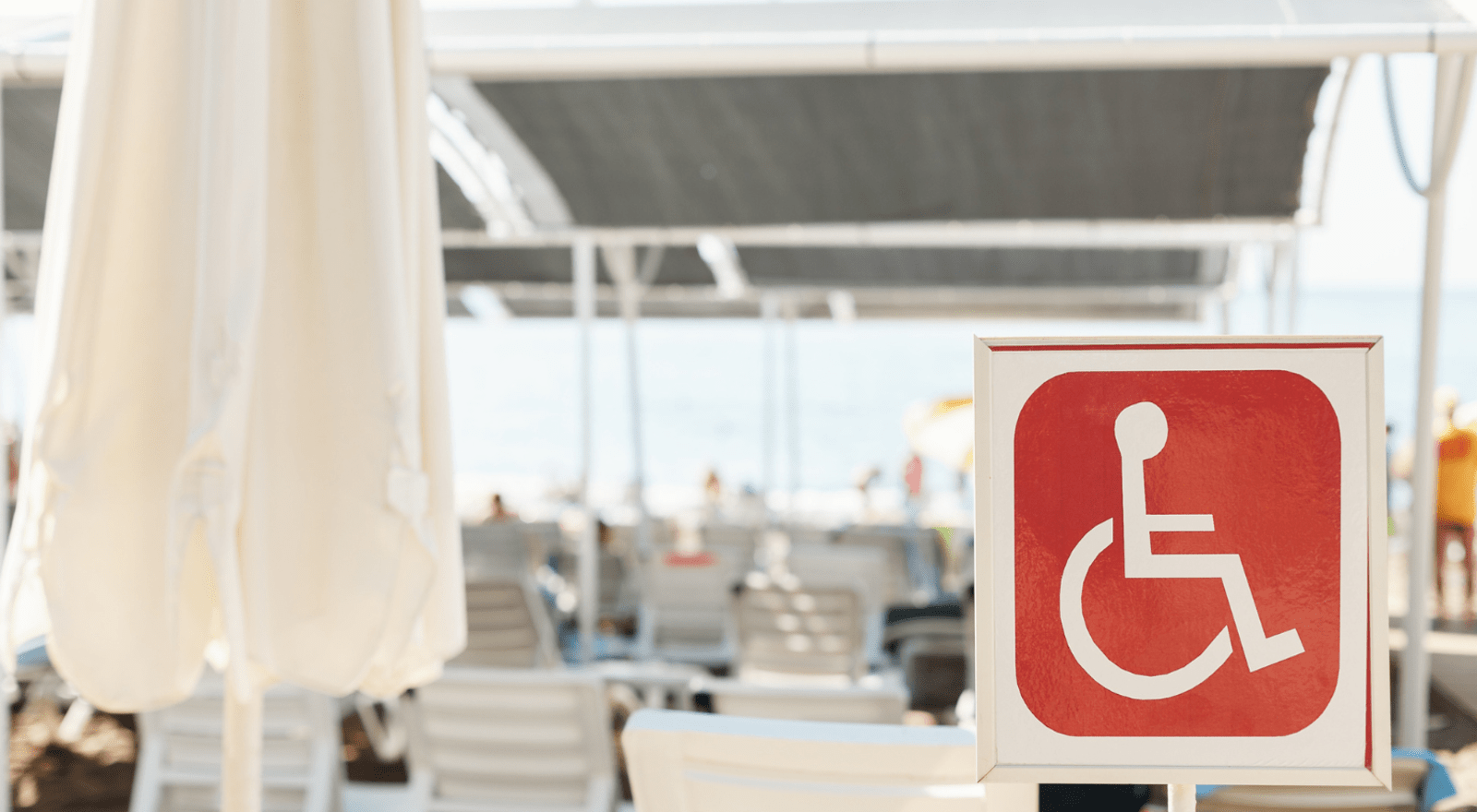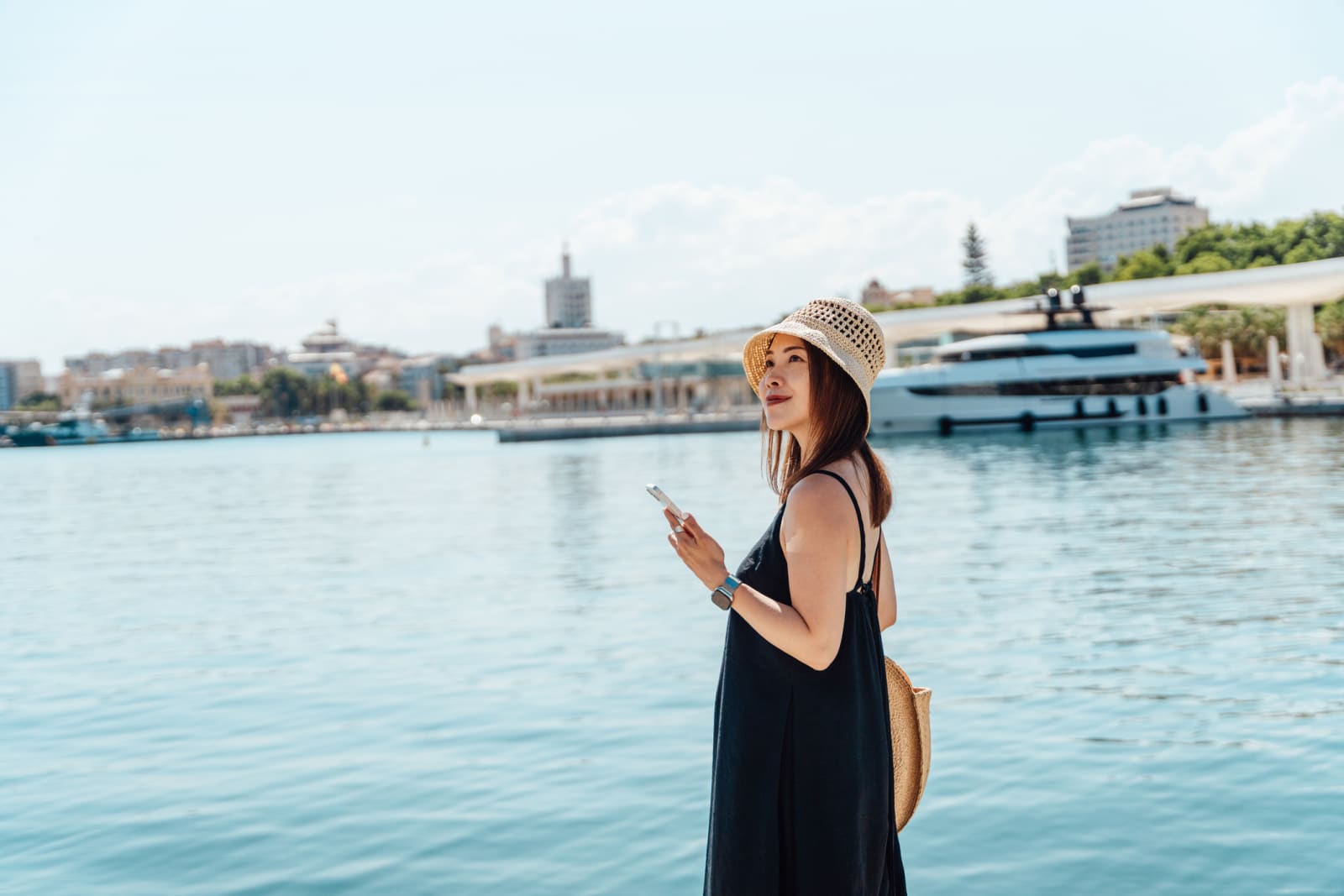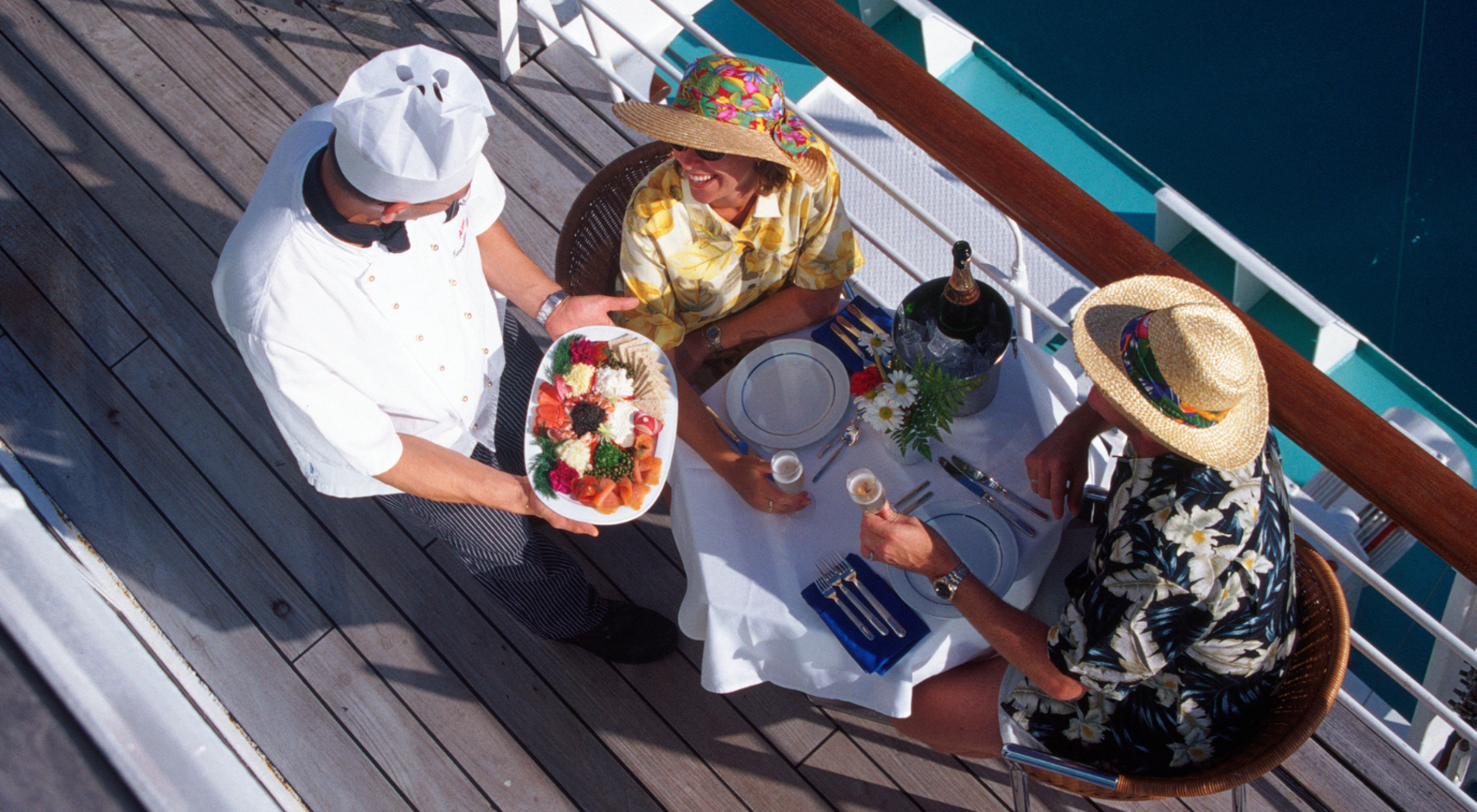18 Insider Tips for First-Time Cruise Goers: Making the Most of Your Maiden Voyage
Consider this guide your treasure map, here to steer you through the choppy waters of first-time cruising.

8min read
Published 25 January 2024
Consider this guide your treasure map, here to steer you through the choppy waters of first-time cruising.
Ahoy there, wannabe cruisers! If you've always dreamt of booking a holiday on the high seas but instead find yourself adrift in a sea of doubts, fear not. We've got all the first-time cruise tips to take you from landlubber to seasoned cruiser in no time.
From choosing the perfect destination and insurance policy to booking shore excursions and onboard entertainment - consider this guide your treasure map, here to steer you through the choppy waters of first-time cruising.
First-time cruise tips you'll find below:
1. Explore all your options before booking
With a (literal) sea of options available to first-time cruisers, it's important to do your research before jumping in at the deep end and booking the first itinerary you see.
Here are some questions to ask yourself when choosing your first cruise:
-
Who are you travelling with?
-
What's your budget?
-
Which cruising style do you have in mind?
-
How much time do you want to spend at sea?
-
What onshore experiences are you looking for?
This should give you a good idea of which type of cruise is perfect for you. For example, if you're travelling with children you're probably on the lookout for cruise ships with a kids club on board, but those sailing with their significant other or friendship group might prefer an adults-only ship.
You'll also want to think about the destination. Starting close to home with a cruise around the Whitsundays, South Pacific or New Zealand is a good option for those just wanting to dip their toes in. But if exploring lots of different ports matters more to you than sea days and the ship itself, a European river cruise might be more your style.
2. Read the fine print to know what's included and what's not
Every cruise is different when it comes to pricing and inclusions. In most cases, your standard base cruise fare will include accommodation, main meals, use of onboard amenities and entertainment. Things like Wi-Fi, port fees, drinks packages and dining in specialty restaurants will typically come with an extra cost.
But don't let this make you nervous, there are plenty of cruise deals in the sea for those looking to save money! All-inclusive cruise fares can be a great way to make the most of everything on board, or you can look for savings in the form of onboard credit, cabin upgrades and package inclusions.
3. Get familiar with the lingo!
One of our more fun first-time cruise tips is to become fluent in the language of cruising! Here's some common cruise lingo to help you talk the talk on board (even if you haven't yet walked the walk).
- Port of call: Stops in the itinerary where your ship docks and you can explore the shore.
- Port: The second meaning of port in the sea-faring sense is simply the left-hand side of the ship when facing forward. You can remember this using the helpful phrase, "no port left in the bottle".
- Starboard: Right-hand side of the ship when facing forward.
- Bow: Front of the ship.
- Aft: Back of the ship.
- Muster Drill: Compulsory safety briefing before you set sail, often held at your assigned Muster Station.
- Gangway: Walkway used when embarking or disembarking the ship.
- Shore excursion: Organised tour or activity at port destinations.
- Embarkation day: First day of the cruise, when you check in and board the ship.
- Ship: You may think this is an obvious one, but it's always, always a cruise ship - never a boat!
3. Get familiar with the lingo!



One of our more fun first-time cruise tips is to become fluent in the language of cruising! Here's some common cruise lingo to help you talk the talk on board (even if you haven't yet walked the walk).
- Port of call: Stops in the itinerary where your ship docks and you can explore the shore.
- Port: The second meaning of port in the sea-faring sense is simply the left-hand side of the ship when facing forward. You can remember this using the helpful phrase, "no port left in the bottle".
- Starboard: Right-hand side of the ship when facing forward.
- Bow: Front of the ship.
- Aft: Back of the ship.
- Muster Drill: Compulsory safety briefing before you set sail, often held at your assigned Muster Station.
- Gangway: Walkway used when embarking or disembarking the ship.
- Shore excursion: Organised tour or activity at port destinations.
- Embarkation day: First day of the cruise, when you check in and board the ship.
- Ship: You may think this is an obvious one, but it's always, always a cruise ship - never a boat!
4. Talk to your cruise line about accessibility requirements in advance
If you or someone you're travelling with requires special accessibility equipment or assistance it's best to let your cruise line know sooner rather than later.
Royal Caribbean, for example, asks for at least a month's notice for passengers requiring special needs equipment or services on board and MSC Cruises requests that information about mobility requirements be provided, ideally, when making your booking.
Your Cruise Expert can also help make sure your accessibility requirements are accommodated and entered into your booking.



5. Book a room towards the middle of the ship if you're worried about seasickness
Most cruise ships are so well-stabilised that you probably won't even feel yourself moving. In fact, according to Celebrity Cruises, tilting as little as 1% is to be avoided. So, while it's actually pretty unlikely you'll get seasick on board, it's a common concern for many first-time cruisers.
If you are prone to seasickness, consider your cabin location when booking and choose a stateroom as close to the lower middle of the ship as possible. This is the most stable area on board and where you'll feel the least movement. If it's within your budget, we'd also recommend splurging for a balcony cabin over an interior cabin. The fresh air will help if you do start feeling nauseous and what better spot to look out over the horizon than your own private balcony?
Still worried about seasickness? Visit your GP before you sail and bring medication with you.
6. Protect your voyage with travel insurance
Just as you'd never set sail on a cruise ship not carrying life jackets, we wouldn't recommend cruising without travel insurance.
From unexpected trips to the ship's medical centre to onshore accidents and misplaced belongings, insurance can protect your first cruise holiday from veering too far off course. Plus, for some cruise lines and travel destinations (like New Caledonia) it's actually a requirement, so you won't be able to board without it!
First-time cruisers should remember that travel insurance is never a one-size-fits-all situation, and cruise cover is not necessarily included in all policies. Before you buy, it's important to double-check that your insurance covers you for cruising as well as any onshore activities you're planning to take part in.
Chat with one of our Cruise Experts about your insurance options today for peace of mind at sea.
7. Book onboard activities and dining as soon as possible
From the Mandara Spa and Salon® on board Norwegian Cruise Line to incredible Broadway theatre performances with Royal Caribbean and even Pickleball on select Celebrity Cruises ships, there's certainly no shortage of activities to keep you entertained at sea.
If you're a first-time cruiser, we'd recommend having a good look at what's available on your ship (make sure you're looking at the specific ship, not just the cruise line) and booking anything you don't want to miss out on as soon as you can.
For some cruise lines, you'll be able to do things like make restaurant reservations, book spa treatments and reserve specific seating times in the main dining room long before heading to the cruise terminal. For other cruise lines, you won't be able to book until you're on board, so you'll want to do this on the first day.
Either way, the early cruiser catches the fish when it comes to locking in onboard dining and activities!



8. Organise your onshore adventures in advance
There's more to cruising than spas, sunsets and relaxing poolside with a cocktail. In fact, one of the most exciting things about cruising is actually getting off the ship and exploring the ports.
You can usually either book shore excursions directly through your cruise line or do your own research and book independent tours and activities. Both are good options but again, make sure you book as soon as you can to avoid disappointment later on.
If you do decide to book with an independent company, double-check your timings. Your ship won't wait for you if you're late coming back to the cruise terminal!
9. Don't forget about your passport and visa requirements
We know it can be easy to forget about passports when you're not heading to the airport, but if your cruise ship is bound for any international ports then you're definitely going to need it. Some destinations also require six months validity on your passport, so it's worth checking well in advance to allow time to renew if needed.
Not leaving Australian waters? You'll still need to keep a government-issued photo ID handy at all times. For younger cruisers under 18 who don't have photo ID, sailing with a valid Medicare card or passport is usually a good way to go.
Depending on where you're cruising, you may also need a visa. Your cruise line can normally help advise on what's needed, but you can always chat with your Cruise Expert if you're not sure.
10. Download your cruise line's app before you board
Did you know that most cruise lines have their own app? From deck plans and onboard activity schedules to shore excursions and dining reservations, your cruise app is the perfect way to keep on top of everything at sea.
Some cruise lines will also let you use the app to check in and load your boarding pass, so it's worth downloading in advance and familiarising yourself with it to help speed up the boarding process.



11. Be strategic when packing your carry-on bag
You'll probably part with your main luggage before you even board the ship on day one, and you normally won't see it again until hours later. To make sure you don't spend the start of your cruise waiting around, here are some things you'll want to throw into your carry-on:
-
Medication
-
Togs and towel
-
Sunscreen
-
Phone charger
-
Headphones and a good book
-
Kids entertainment
12. Opt for an early boarding time if you can
Choosing to board early on day one is a great way to avoid the crowds. Plus, your cruise might offer a ship tour or have the fancier suites open for viewing on the first day - an especially fun activity when sailing on luxury lines.
It's the same price whether you're the first one on the gangway or the last, so you might as well board the ship early and get your money's worth!
13. Unpack your suitcase on the first day
The great thing about a cruise vacation is that you're essentially travelling in a huge floating hotel, so you'll always have your luggage with you and can skip the hassle of constantly having to pack everything up. For this reason, we recommend unpacking your suitcase on the first day and making yourself at home.
Another tip for newbie cruisers is to open all the cupboards, draws and doors (basically anything with a handle) in your room. Cruise staterooms are a bit like the TARDIS; they're much bigger on the inside. So, while it may not seem like a lot of storage there's probably much more than you think!



14. Airplane mode is your new best friend
We've all heard the horror stories. Someone goes on holiday, forgets to switch off international data roaming, and ends up getting hit with an eye-watering phone bill a month later.
It may seem a little odd to be using flight mode on a cruise ship, but it's a quick tap that could save you from accidentally spending thousands in roaming fees. Make sure your phone is switched to flight mode from the minute you board the ship until you arrive back home to stop your phone from trying to pick up signals way outside its coverage.
15. Buy the right Wi-Fi package for your cruise
Cruising is a great time to treat yourself to a bit of an internet and social media detox, but you're probably still going to need some Wi-Fi during your trip.
For most cruise lines, unless you've purchased an all-inclusive fare or found a deal with special inclusions, you'll pay extra to surf the web from the sea.
Packages vary from ship to ship, so think about how much internet access you're actually likely to need before adding it to your booking. Will you just be sending the odd message to make your friends at home jealous or do you need to make video calls?
16. Don't accidentally tip twice for onboard bills
For most Australians, tipping isn't second nature and can be a confusing part of overseas travel. When cruising, you're generally expected to tip for things like drinks at the bar, spa treatments and restaurant dining.
A handy tip for first-time cruisers though is to check whether the cruise line has already added these gratuities to your bill. Many cruise lines will automatically include a tip of around 20%, so if this is the case there's no need to add an additional amount on your receipt when paying unless you experienced some truly exceptional service. Tipping once is plenty.
And while tipping on board is almost always cashless, don't forget to carry some local currency with you for tipping tour guides and restaurant staff in the ports.



17. Keep an eye on your onboard spending
It's easy to get excited on board your first cruise. You want to eat all the food, drink all the drinks and experience all the experiences. And rightly so! But it's also very easy to spend money, so don't forget to keep tabs on your onboard account so you don't go overboard.
Cruise lines are almost always cashless these days. Anything you buy will be added to your onboard account, which you'll settle on the final day of your cruise. This makes everything super convenient and stress-free while on board, but if you're worried about overspending (or sailing with kids and teens) some cruise lines will let you set a spending limit for your account.
18. Check your itinerary for formal or theme nights and embrace them
The last of our first-time cruise tips is a fun one. While the day-to-day dress code on most ships is casual (including embarkation day, there's no need to dress up for day one), some itineraries will include a formal night or other themed events that call for some more particular clothing.
While no one is going to force you into a floor-length evening gown or tux if it's not your thing, we'd 100% recommend embracing these events if they're included in your itinerary. Check your cruise line's dress code when organising your packing list and come prepared with the appropriate attire.
Ready to sail away on your first cruise? Explore our exclusive cruise deals today!
Site quick links
Help & support
Flight Centre acknowledges the Traditional Custodians of Country throughout Australia.
© Flight Centre Travel Group Limited. ATIA Accreditation No. A10412.
*Travel restrictions & conditions apply. Review any specific conditions stated and our general terms at Terms and Conditions. Prices & taxes are correct as at the date of publication & are subject to availability and change without notice. Prices quoted are on sale until the dates specified unless otherwise stated or sold out prior. Prices are per person.





